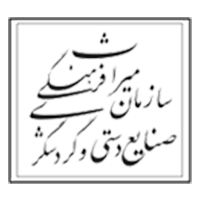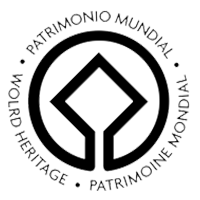Temenos or the Sacred Quarter
The middle enclosure wall of Dūr Untaš has a relatively regular geometric shape; it is a square measuring 400 m in length on each side. The wall is five meters thick made up of mud bricks measuring 40x40x10. Along the wall, there are four gates named the Eastern Gate, the Royal Pass, the Susa Gate, and a blocked gate as well as a brick tower called Nurkiprat.

Figure 1: A view of the temenos, by Mehrdad Misaghian
The space between the middle and the outer walls is called temenos or sacred quarter. The quarter proves sacred since several temples had been built there for some Elamite deities as well as those of neighboring cultures. The buildings of ten temples have been identified in the temenos so far. Inscribed bricks have been used in these temple buildings; these bricks bear the names of those deities the temples had been dedicated to. Apparently more temples had been designed to be built in the sacred quarter but they could never be constructed due to the king’s demise. Such perception comes from found stray inscribed bricks with other god names that were not related to any temples there.
In the eastern part of the temenos, four buildings had been respectively dedicated to the following deities: Pinikir, Im (Adad), Shela, Shimut, Nin-eli (Belt-eli), and Nepratep. These temple buildings are situated next to one another and together known as Eastern Temple Complex. The first three buildings of the complex have similar plans. For all the three buildings, the door jambs are made of stone and the doors had probably been decorated by black and white pieces of glass. Past the entrance, there is a courtyard and at the end of the courtyard, there are rooms and the adytum in all the three buildings. The access paths to these rooms are brick-paved. In the first temple, dedicated to goddess Pinikir, abundant human figurines including female figurines breastfeeding their children and various animal figurines such as those of a turtle, a scorpion, and a monkey as well as bronze beads, rings and nails have been found. One of the female figurines associates with the statue of Queen Napirasu discovered from Susa. The most significant find from temples Im and Shela is pieces of a clay statue of a bull half-life size and decorated with blue glaze; the statue carries the name of the Elamite goddess, Im, on it. Also, in the third temple, Shimut and Nin-eli, several female human figurines and animal figurines like that of a dog and a monkey have been found. Nepratep temple, the last on this temple list, has an entirely different plan: past the courtyard, it has four rooms or worship rooms the floors of which have been paved with brick.

Figure 2: Position of the Eastern Temple Complex toward the ziggurat, by Mehrdad Misaghian
Hishmitik-ruhuratir temples, in the northeast, are some other religious buildings in the temenos. The finds from these temples mainly include broken ceramic shards as well as remains of a bathroom or a bathtub. These finds suggest that purification ceremonies, probably through ablution, could have been carried out in these temples.

Figure 3: Position of Hishmitik-ruhuratir temples toward the ziggurat, by Mehrdad Misaghian
There are two simple buildings called Square temples in temenos within a close distance from the inner enclosure wall. These two temples are located in the southeast and west of the inner wall. Neither inscribed bricks nor any objects introducing the buildings have been discovered from the two temples.

Figure 4: Square temples outside the first wall, by Mehrdad Misaghian
Temenos is not merely composed of temples and monumental buildings. Four other buildings have been excavated here which did not have ritual associations and could more be considered as construction workshops abandoned in the middle of working process. Ghirshman regarded these buildings as either residential units or storerooms for mineral gypsum and bitumen.



